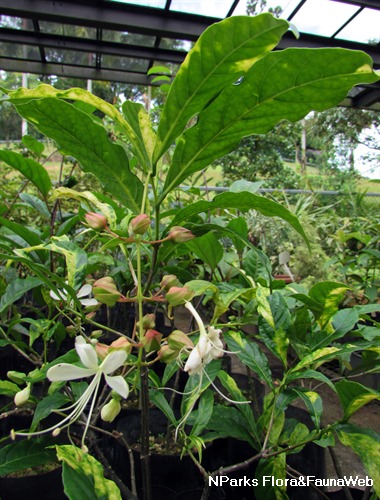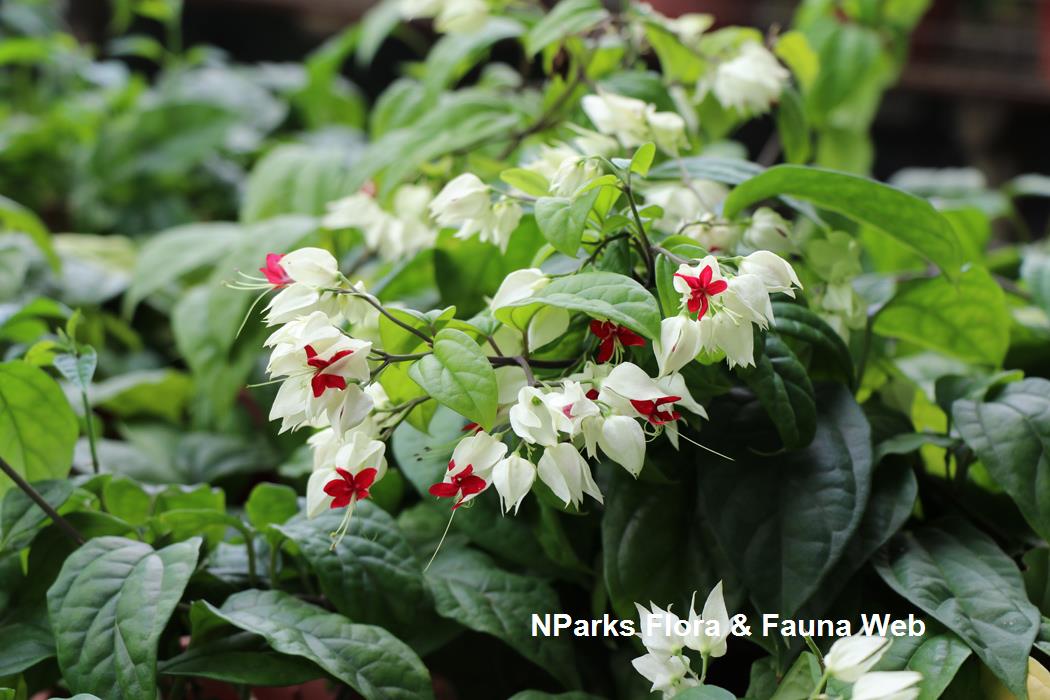
Back
Clerodendrum thomsoniae
| Family Name: | Lamiaceae (Labiatae) |
| Common Name: | Bleeding-heart Vine, Bag Flower, Bleeding Glory Bower, Glory Tree, 龙吐珠, 珍珠宝莲 |
Name
Classifications and Characteristics
| Plant Division | Angiosperms (Flowering Seed Plants) (Dicotyledon) |
|---|---|
| Plant Growth Form | Climber |
| Lifespan (in Singapore) | Perennial |
| Mode of Nutrition | Autotrophic |
| Plant Shape | Shrubby |
| Maximum Height | 3 m to 3.5 m |
Biogeography
| Native Distribution | West Africa |
|---|---|
| Native Habitat | Terrestrial |
| Local Conservation Status | Non-native (Spontaneous (Casual)) |
Description and Ethnobotany
| Growth Form | Evergreen vine or shrub with a twining growth habit, up to 7 m in length. |
|---|---|
| Foliage | Smooth, dark green glossy leaves are elliptic with entire leaf margin, measuring up to 15 cm long and 7 cm wide. Leaves are deeply veined and have a long pointed tip (acuminate apex). Leaf base is obtuse or rounded. Leaves are arranged oppositely along the stem. |
| Stems | Woody, quadrangular, puberulent (hairy). |
| Flowers | Flowers are composed of 4 white, ovate calyces and 5 dark red, obovate petals and 5 white, long stamens. The calyces form a pyramidal shape with the tips hanging downwards. |
| Fruit | Fruits are drupe-like, black. Seeds oblong. |
| Habitat | Found in disturbed areas, wet lower montane forests and weedy flats. It is mostly planted as ornamental in cultivated areas. |
| Cultivation | Plant in slightly acidic to neutral, well-drained soil with 0.5 - 0.6 m of space between individuals. The soil should be kept moist, but not soggy. This species grows best in a humid environment. Generously feed with a fertilizer containing micronutrients. A slow-release fertilizer can be applied bimonthly or a liquid soluble fertilizer monthly. Adequate calcium is required for optimal flowering and may be added to the soil mix as crushed egg shells. Propagate by woody stem cuttings or suckers. |
| Etymology | The genus Clerodendrum comes from Greek word meaning chance-tree. The specific epithet thomsoniae is named in honour of Thomas Thomson, a Scottish doctor who was superintendent of the Calcutta Botanic Garden. |
Landscaping Features
| Desirable Plant Features | Ornamental Flowers |
|---|
Plant Care and Propagation
| Light Preference | Full Sun |
|---|---|
| Water Preference | Moderate Water |
| Plant Growth Rate | Fast to Moderate |
| Potential Problems | Mealybugs and whiteflies. |
| Pest(s) | Sucking Insects |
| Propagation Method | Stem Cutting |
Foliar
| Foliage Retention | Evergreen |
|---|---|
| Mature Foliage Colour(s) | Green |
| Mature Foliage Texture(s) | Smooth |
| Prominent Young Flush Colour(s) | Green |
| Young Flush Texture(s) | Smooth |
| Foliar Type | Simple / Unifoliate |
| Foliar Arrangement Along Stem | Opposite |
| Foliar Attachment to Stem | Petiolate |
| Foliar Shape(s) | Non-Palm Foliage |
| Foliar Venation | Pinnate / Net |
| Foliar Margin | Entire |
| Foliar Apex - Tip | Acuminate |
| Foliar Base | Rounded / Obtuse |
Floral (Angiosperm)
| Flower & Plant Sexuality | Bisexual Flowers |
| Flower Colour(s) | White, Red |
|---|---|
| Flower Texture(s) | Smooth |
| Flower Grouping | Cluster / Inflorescence |
| Flower Location | Axillary |
| Flower Symmetry | Radial |
| Inflorescence Type | Compound Umbel |
| Flowering Period | Free-Flowering |
Fruit, Seed and Spore
| Mature Fruit Colour(s) | Black |
|---|
References
| References | <1> Allen Hammer, P. (1992). D. Clerodendrum thomsoniae. Introduction to Floriculture (Second Edition) 1992, 477-509. Accessed on 14 Aug 2024. https://www.sciencedirect.com/science/article/abs/pii/B9780124376519500245 <2> Kar, P., Chakraborty, A.K., Bhattacharya, M., Mishra, T., Sen, A. (2019). Micropropagation, genetic fidelity assessment and phytochemical studies of Clerodendrum thomsoniae Balf. f. with special reference to its anti-stress properties. Research in Plant Biology 2019, 9: 9-15. Accessed on 14 Aug 2024. https://core.ac.uk/download/pdf/236014585.pdf |
|---|
Image Repository
Others
| Master ID | 74 |
|---|---|
| Species ID | 1370 |
| Flora Disclaimer | The information in this website has been compiled from reliable sources, such as reference works on medicinal plants. It is not a substitute for medical advice or treatment and NParks does not purport to provide any medical advice. Readers should always consult his/her physician before using or consuming a plant for medicinal purposes. |

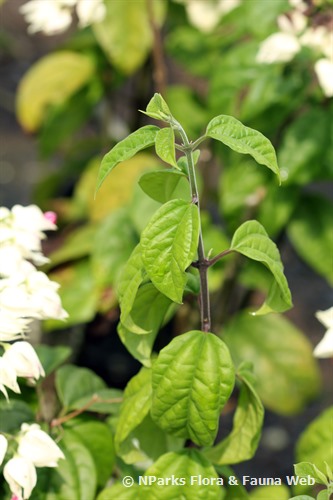
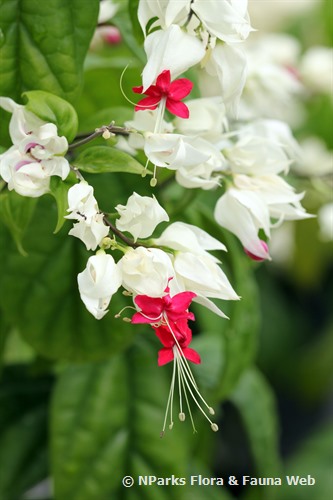
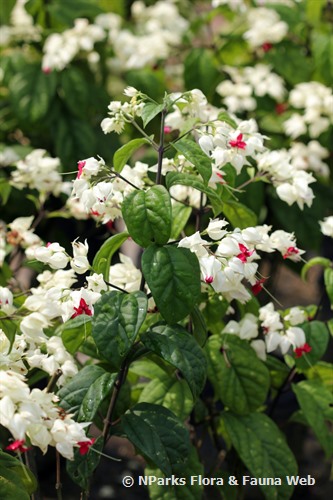
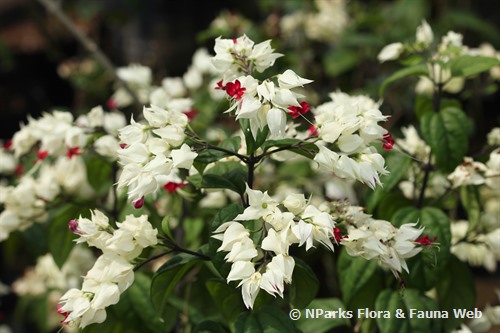
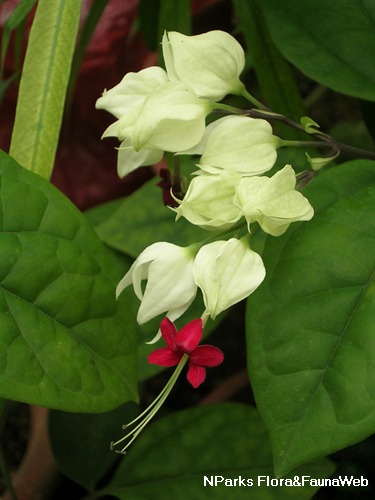
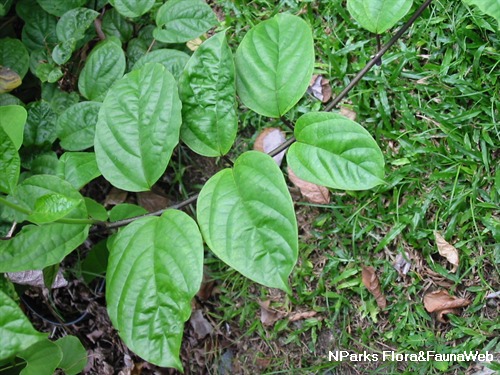
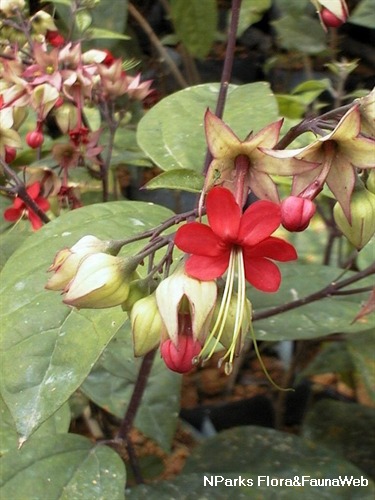
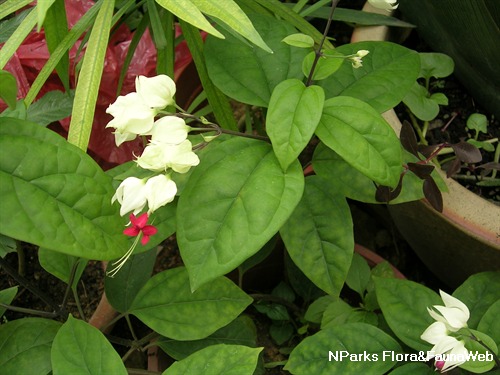
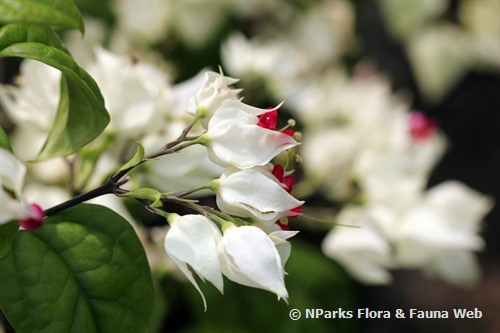
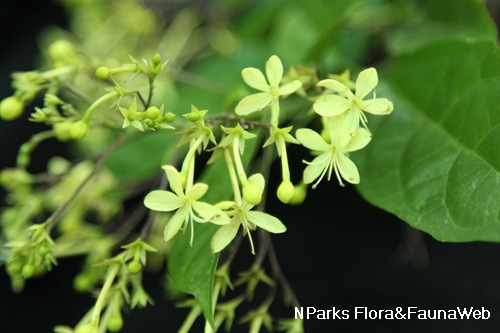
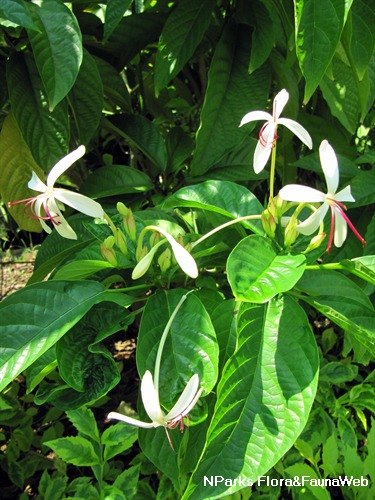
.jpg)
